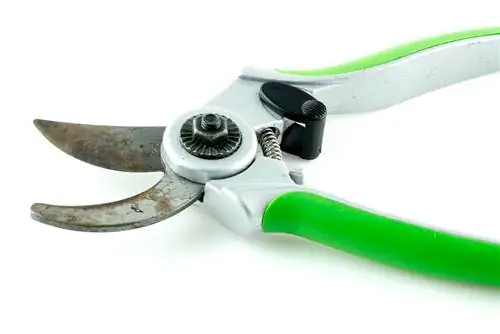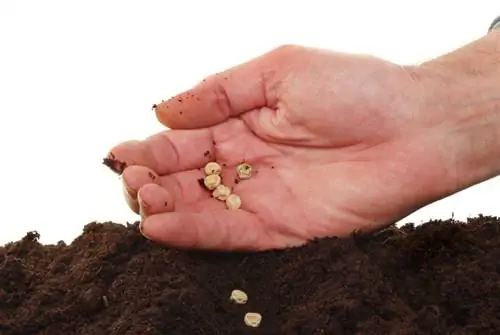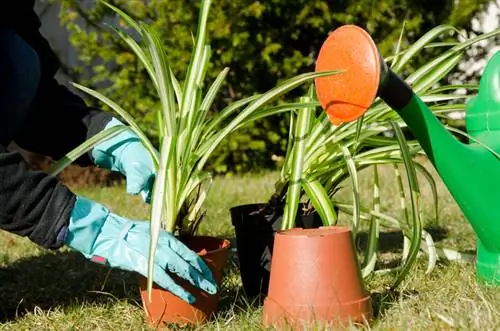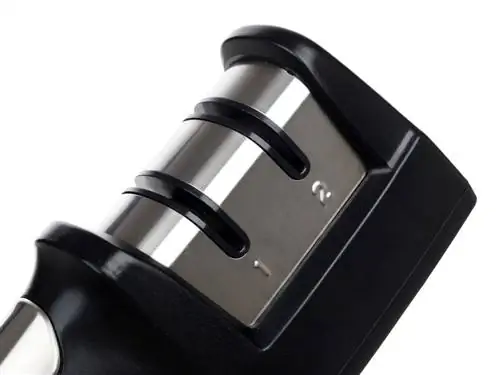- Author admin [email protected].
- Public 2023-12-16 16:46.
- Last modified 2025-06-01 06:02.
Garden shears, pruning shears and pruning shears can become so dull over time that they can no longer cut through even thin branches. Before it gets to that point, you should sharpen your pruning shears. Below you will find out how to do this and what you need.

How can I sharpen my secateurs?
To sharpen secateurs you need a screwdriver, coarse and fine whetstone, water, cloth, oil and steel wool. Disassemble the scissors, clean them, sharpen the cutting edge(s) with whetstones, oil the connection and put everything back together.
What should you pay attention to when sharpening secateurs?
Garden shears and also branch and pruning shears consist of two parts that are connected to each other by a screw. There are two different types of cutting systems and the first step is to find out which one your garden shears use:
Anvil cutting method
The anvil variant has a cutting edge and a wider claw that has no cutting surface. Here the branches are cut from the cut surface and meet a smooth surface on the other side. There is more of a risk of bruising here.
Bypass incision method
Here the secateurs have two blades that cut towards each other so that the branch is cut from both sides.
Examine your pruning shears or pruning shears carefully and find out whether they have one or two cutting edges, as this is the only one that needs to be sharpened. However, you should clean the claw when you have the opportunity.
You need these tools to sharpen your secateurs
- Screwdriver or wrench (depending on the type of screw connection)
- coarse whetstone
- fine whetstone
- Container with water
- absorbent cloth
- Oil
- Steel roller (for washing dishes)
How to sharpen your pruning shears step by step
1. First unscrew the connection between the two parts so that you can take them apart.
2. Clean your secateurs thoroughly. You can find out which means to do this and how best to proceed in our cleaning instructions. Dry both parts thoroughly and put the claw - if present - aside.
3. Now grab a coarse grinding stone (€2.00 on Amazon), wet it with water and sharpen your pruning shears. Make sure you get the angle right! You don't need a protractor to do this, just a little sensitivity. Sand from both sides.
4. Now take the fine whetstone and repeat the process.
5. Oil the spring or connecting screw.
6. Screw the two parts back together and remove any sanding residue with the steel wool.
Tip
When sharpening, make sure that the secateurs are always pointing away from you so that you cannot injure yourself.






